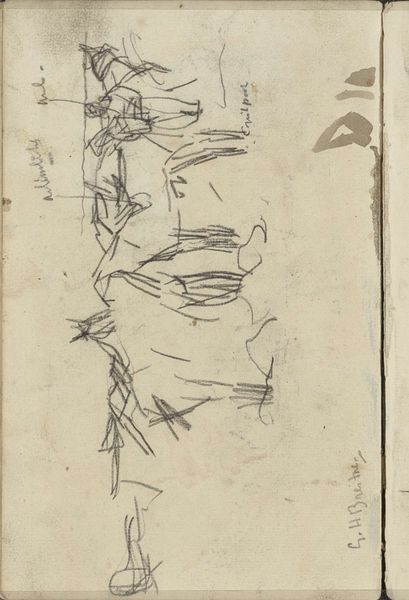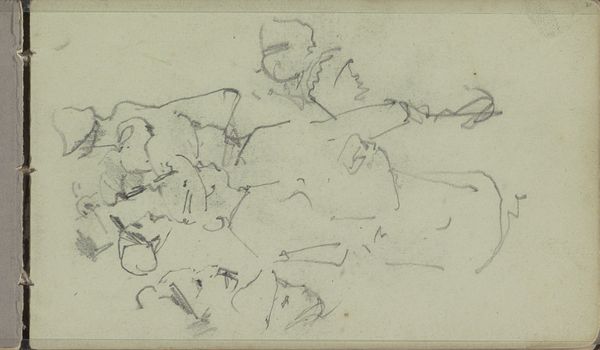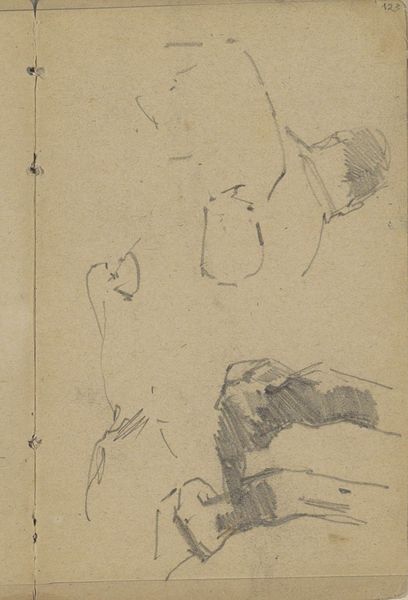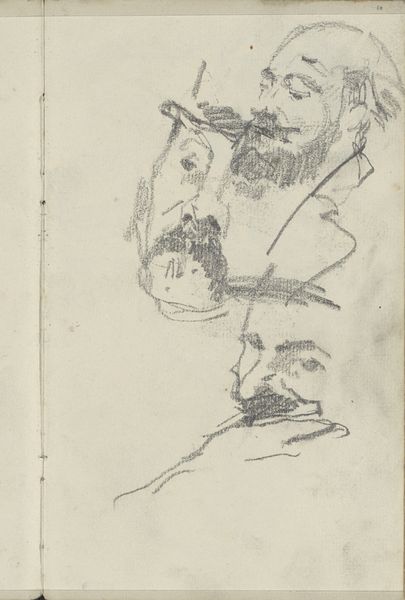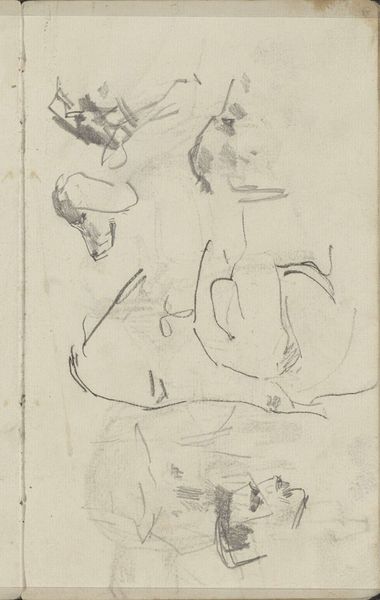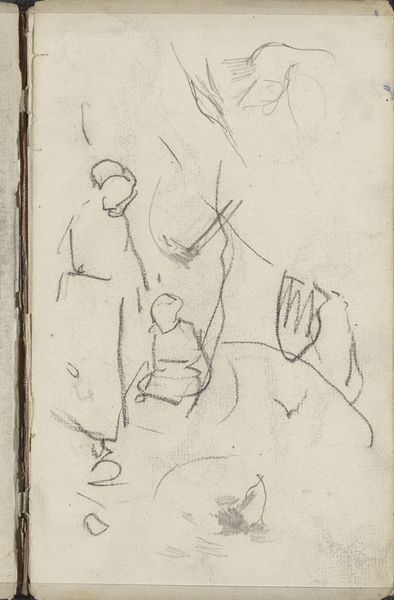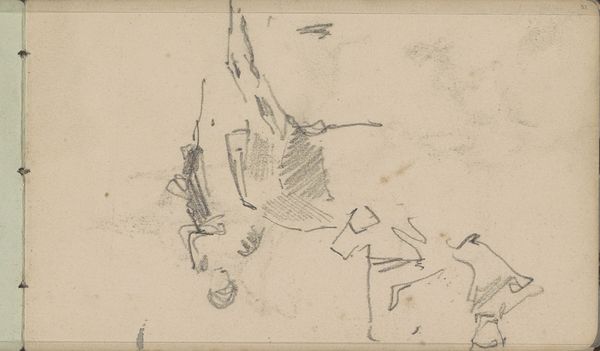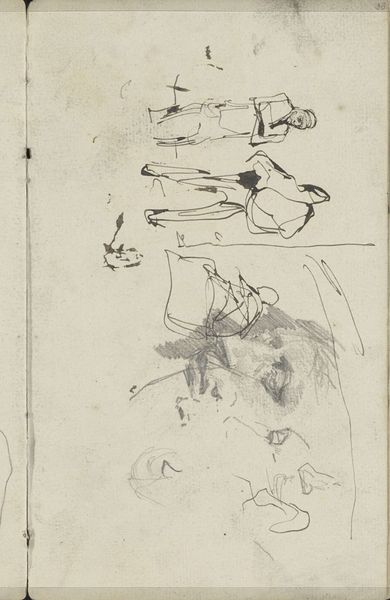
drawing, pencil
#
drawing
#
figuration
#
pencil
#
horse
#
realism
Dimensions: height 162 mm, width 99 mm
Copyright: Rijks Museum: Open Domain
Curator: This sheet of sketches, called "Figuurstudies en paarden," or "Figure Studies and Horses," was rendered by George Hendrik Breitner between 1880 and 1882, during his early period. It's now part of the Rijksmuseum collection. What strikes you most about it? Editor: Its vulnerability. It feels like peeking into the artist's notebook, seeing thoughts take shape tentatively, like whispered secrets. The pencil strokes are so light, barely there, it's as if he's afraid to commit. Curator: Yes, exactly! You feel his searching, the restless energy as he captures these fleeting glimpses of figures and horses. What interests me particularly is how he approaches realism. It is, of course, the observation, the real… But the rough quality of the sketch adds a strange expressive depth, doesn’t it? Editor: Absolutely. This wasn't meant for public consumption, so we see a kind of working-class materiality stripped bare—literally, just paper and pencil. It begs the question, where did he source the materials? Did the paper’s texture influence the pressure of the pencil? It brings to mind Breitner's fascination with the everyday. Was sketching on readily available paper a conscious choice, an anti-academic stance even? Curator: That's fascinating. You are right, it challenges the hierarchy of materials, doesn’t it? The raw quality removes any artifice, giving us access to the artist’s unfiltered observation. Editor: I also notice how fragmented the images are—heads floating, horses incomplete. Were they based on specific models? Or just products of his memory or imagining? Curator: It’s thought that Breitner may not have actually directly used the image and horses portrayed. They served more as inspiration, as springboards for memory and emotions. But he really was about capturing a feeling or atmosphere rather than literal accuracy, wasn’t he. Editor: This raw immediacy does, strangely enough, enhance their realistic feeling. We see figures in formation, caught in moments before realization. There's a power in its seeming incompleteness, actually. Curator: Definitely, these are the bare bones of artistic thought, and in them, a potent kind of truth. Thanks for helping me consider Breitner's approach in this fresh light. Editor: My pleasure. It's been enlightening for me as well, looking beneath the surface of a drawing and seeing how basic resources such as paper can challenge our expectations of traditional artwork.
Comments
No comments
Be the first to comment and join the conversation on the ultimate creative platform.

